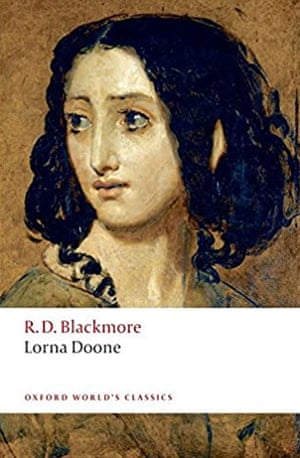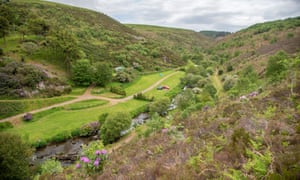It is a place of wooded valleys, tumbling rivers and rugged moorland that was immortalised in the 19th-century novel Lorna Doone, a twisty tale of romance, murder and outlaws by RD Blackmore.
The National Trust announced on Tuesday it had bought nine acres of land in Doone country, including farmhouses and cottages, and is hoping to encourage more visitors to explore this tucked-away area of Exmoor.
Visitors will be able to take tea at the farmhouses, hike through the landscape to find spots featured in the novel and – as soon as restrictions are lifted – camp near a river that (in Blackmore’s words) glides “with a soft dark babble”.
The announcement from the conservation charity was tinged with melancholy. It said it bought the nine acres on the border of Devon and Somerset shortly before the lockdown for GBP1.5m – and stressed this was likely to be its last acquisition for some time as it contemplates a loss in income of GBP200m this year because of the coronavirus crisis.
But it argues its plans for the Doone land come at a time when its aim of providing nature, beauty and history for everyone is more relevant than ever.

Set on 17th-century Exmoor around the banks of the Badgworthy Water river, Blackmore’s book tells the story of the Doone clan, nobles turned outlaws, and farmer’s son John Ridd, whose quest for revenge becomes complicated when he and Lorna begin an illicit relationship.
Blackmore weaved real events, historical figures and local legends into his fiction and one of the joys of the book for fans is to try to work out which bits are real, which made up, and visiting Exmoor to try to pinpoint the locations in the book.
The National Trust’s acquisition consists of two sites. The first is the Lorna Doone farmhouse in the picture-postcard village of Malmsmead, near Lynton. The farmhouse, which will be home to a refurbished tearoom called The Buttery, is close to a 17th-century bridge and ford.
The farmhouse does not appear to feature in the book and may have been named after its publication in honour of it. But the idea is to use it to create a “gateway” to buildings and landscapes that Blackmore did depict, such as the Church of St Mary, where Blackmore’s grandfather was a rector and which the author borrowed for the marriage between Lorna and Ridd.
South of the farmhouse is the second spot – the Cloud Farm campsite. People have camped on the banks of Badgworthy Water for years but the trust is planning to upgrade it and open a second cafe in the farmhouse. The campsite is close to the site of a medieval village believed to be the inspiration for the Doone clan’s hideaway.

Rob Joules, the National Trust’s general manager for the north Devon coast and countryside, said one of the joys of the place was the feeling of a land where time has stood still. “It is like one of those places that time has forgot. It’s very remote and very beautiful. You see herons in the river, deer on the hillside. We’re hoping to get the campsite open in July. It’s pitch black at night, just the sound of the river and birdsong. It’s the perfect spot to get away from it all.”
The area has wonderful flora and fauna too. Not far away is the trust’s Holnicote estate, where beavers were recently reintroduced. Further west is the Heddon Valley, one of the few homes for the rare high brown fritillary butterfly. There are ancient oaks and peregrine falcons. Money raised through the tearooms and campsite will be reinvested into conserving the land and its wildlife.
Joules said: “By diversifying our income streams on this part of Exmoor we will be able to increase the funds we spend improving access, creating amazing outdoor experiences and space for nature to thrive.”
Andrea Davis, a local county councillor and avid collector of Lorna Doone books, said the appeal of the story endured. “We’re very proud of the book here,” she said. “We get a stream of visitors who come to pick out the places mentioned in it. It’s a romantic story but there are some nasty little bits in it. I sometimes think we don’t make enough of Lorna Doone here so anything that brings more people in is to be welcomed.”